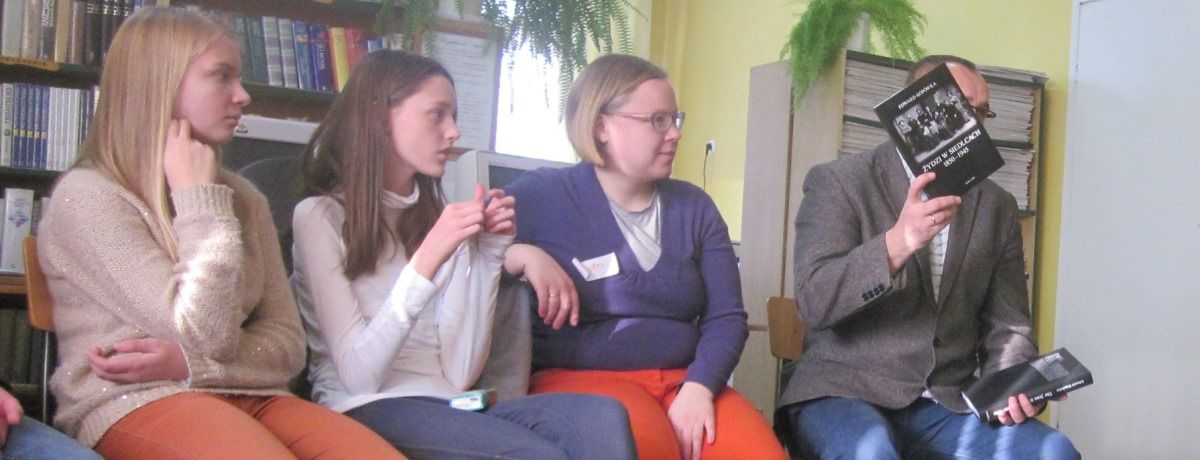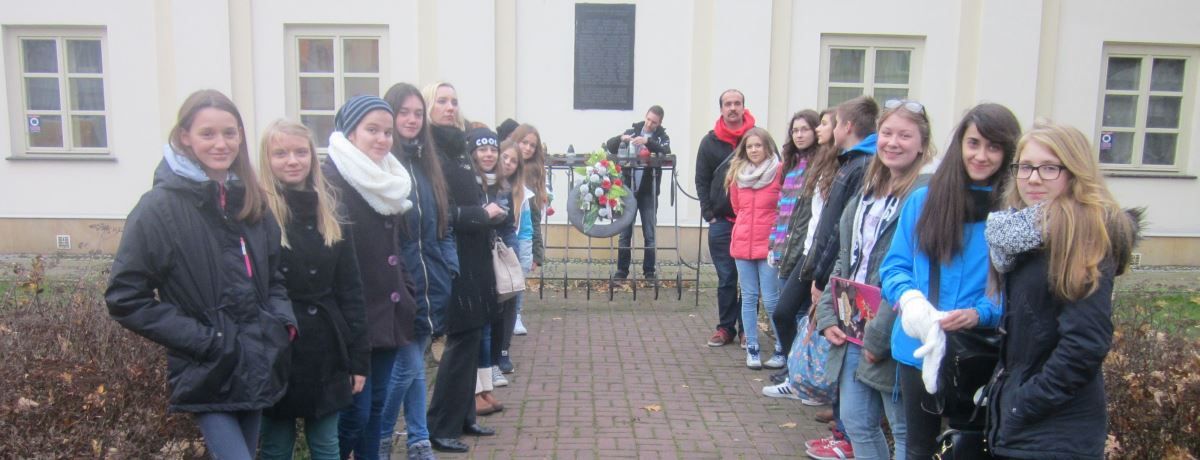Siedlce
School Complex No 1


They prepared not one, but three itineraries of the walking tour “Following the footsteps of Jews of Siedlce”. They invited their fellow students to discover the history of Jews from Siedlce. In addition, they prepared a multimedia presentation and published a guide to the Jewish parts of Siedlce. They established collaboration with the local branch of the Polish Tourism and Sightseeing Society. All of the above-mentioned activities of students from a junior high school in Siedlce are the results of their participation in the School of Dialogue program. Michał, one of the workshops’ participants, said, “These meetings taught me that history is very important and must be remembered.”
The history of Jews in Siedlce dates back to the 16th century, when the first Jews started settling in the town. In 1794 they built the first synagogue, and another in 1859. At this time they already constituted more than 70% of the town’s total population. They had their own newspapers: “Szedlesker Wochnblat” and “Dos Szedlesker Lebn”, a hospital, and schools. In 1906 the Imperial Russian Army carried out a pogrom of the Jewish population, killing approx. 100 people. After the Great War, the city started growing dynamically once again, although at that time Jews constituted only half of the population. New Jewish printing shops were established, several new book stores, and many service facilities. In Siedlce Jews had bakeries, goldsmithing facilities, and metal depots, as well as hotels, restaurants, and sweet shops, not to mention two chemist’s shops, 3 mills, and one tea shop.
All these enterprises were shut down by the Germans as soon as the World War II occupation had begun. On Christmas Eve 1939 the Germans burnt the synagogue, and in 1940 they created a ghetto in the town. In August 1942 approx. 10,000 Jews were transported to the death camp in Treblinka, with the remainder distributed among various forced labour camps. By November 1942 all Jews had been shot on the premises of the Jewish cemetery.Today, the only signs of Jewish life in Siedlce include the Talmud-Torah school building in 4 Browarna Street, the old tenements in the town centre (some of them even with marks left by the mezuzahs), as well as plaques that displayed the real property’s owner’s name in addition to the house number. Other buildings that stand to this day include Adolf Gancwol’s photo atelier, the former Nursing Home for Elderly and Disabled Jews, the Jewish cemetery with approx. one thousand matzevot, as well as two commemorative plaques in Joselewicza Street.
The junior high students from Siedlce who participated in the workshops formed a very tight-knit and ambitious group. As they said themselves, they had learnt many interesting things and had realized that the old Jewish inhabitants had played a major role in the history of their town. They liked searching for the information they needed, as well as the fact that they could look at Siedlce in a slightly different light than previously.

“This opportunity to expand my knowledge is something extraordinary to me, especially in light of the pleasant atmosphere during the workshops,” said Gabrysia, one of the School of Dialogue participants. The students very carefully divided the tasks they had to do at an early stage of the workshops. While preparing the walking tour, they used the resources available online, a book by Mr. Edward Kopówka, the director of the Museum of Struggle and Martyrdom in Treblinka, who was a guest on the School of Dialogue workshops, as well as one surviving album of the pre-war Siedlce photographer Adolf Ganiewski (Gancwol).
During the walking tour they organised, the students tried to share their knowledge with the others in an attractive way. The tour participants visited the Talmud-Torah school in Browarna Street, the synagogue in Piłsudskiego Street, and the cheder in Joselewicza Street. Then they visited the spot of the old Jewish cemetery at the intersection of Biskupa Świrskiego and B. Joselewicza Streets, and the prayer house in Świrskiego Street. Next they passed by the house bearing the trace of a mezuzah in Kochanowskiego Street, they saw the Jewish Hospital in Armii Krajowej Street, visited the Nursing Home for Elderly and Disabled Jews, and Gancwol’s photo atelier in Sienkiewicza Street.
The content shared during each stop along the tour’s itinerary contained interesting information about Jewish religion and culture. The students also distributed special guides written specifically for the occasion, describing the buildings visited. Finally, a test of knowledge acquired during the walk took place, and the winners received sweet gifts.“It’s a good idea to take a look at the town in which you’ve lived for 14 years through the lens of history. It becomes so mysterious, more interesting, enigmatic,” said the walking tour participants.“I was surprised by the fact that I had no idea that Jews used to form such a big community in our town.The places that I saw today, maybe for the hundredth time, are places related to Jews of Siedlce. I didn’t know that…” others said.
Thus, the authors of the walking tour “Following the footsteps of Jews of Siedlce. The things that remained…” may be proud of themselves. Their project gained the interest of their fellow students, the teachers from Siedlce’s schools, as well as the local branch of the Polish Tourism and Sightseeing Society. Siedlce edition of the School of Dialogue also resulted in the creation of an interesting video coverage of the walking tour, as well as a multimedia presentation that can be used to share the knowledge acquired during the School of Dialogue program with others in the future.

School:
School Complex No 1
Students:
1st and 2nd year junior high students
Teacher:
Anna Sulej
Expert:
Edward Kopówka
Educators:
Agata Jujeczka, Stanisław Niemojewski
In appreciation to the Conference on Jewish Material Claims Against Germany (Claims Conference) for supporting this educational program. Through recovering the assets of the victims of the Holocaust, the Claims Conference enables organizations around the world to provide education about the Shoah and to preserve the memory of those who perished.

In appreciation to Friends of the Forum for supporting the School of Dialogue educational program.
